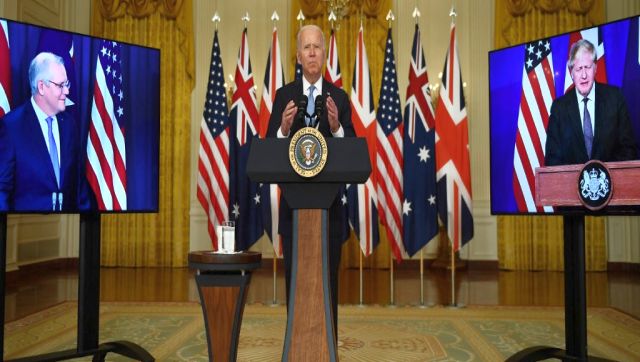On Wednesday, the world was introduced to AUKUS -- a new defence and technology-sharing pact between Australia, the United States of America, and the United Kingdom. The alliance is a thinly veiled bid to counter China, two US officials told Politico . It comes at a time when many Western countries are recalibrating their relations with China. “We all recognise the imperative of ensuring peace and stability in the Indo-Pacific over the long term,” said Biden, who said the new alliance reflects a broader trend of key European partners playing a role in the Indo-Pacific. “We need to be able to address both the current strategic environment in the region and how it may evolve.” As this new alliance comes into being, we try to understand what is the ‘Indo-Pacific region’ and why it’s important in the geopolitical context. What is the Indo-Pacific region? The Indo-Pacific region refers to the confluence of the Pacific and Indian Oceans, which interconnect in Southeast Asia. The German geopolitician Karl Haushofer first used “Indo-Pacific” in the 1920s in multiple works on geography and geopolitics: Geopolitics of the Pacific Ocean (1924), Building Blocks of Geopolitics (1928), Geopolitics of Pan-Ideas (1931), and German Cultural Politics in the Indo-Pacific Space (1939). Many experts believe that the shift from Asia-Pacific to Indo-Pacific is the exponential economic growth ranging from India to China and Japan. The entire Indo-Pacific rim of island states, larger countries like Vietnam and South Korea, and the Indian and Chinese giants have become economically interconnected and now represent the world’s biggest trade markets. Several studies show that at least 50 percent of global GDP will be shared by the Indo-Pacific region. Another reason would be China’s rise. Through its near-trillion-dollar Belt and Road Initiative (BRI), it has expanded its economic (and, some argue, military) foothold in the Indian Ocean. Though the Chinese might disagree with the emergence of the Indo-Pacific concept, it was their economic ambition that showed how the two oceans are economically and militarily inseparable. How US views Indo-Pacific The repeated references to the Indo-Pacific suggest the US has become increasingly focused on China – further reflected in its efforts to revive the Quadrilateral strategic alliance that also includes Japan, Australia and India. According to Charles Dunst , an associate with geopolitical risk firm Eurasia Group’s Global Macro practice, the reason the US uses “Indo” in the term Indo-Pacific is because it highlights India’s importance in dealing with China. The primary focus of the US in regard to the Indo-Pacific strategy is preventing conflict – particularly in the South China Sea. The second focus is to advance American standards and values, especially in areas such as Indonesia and Thailand, who choose not to antagonise Beijing. China’s growing clout China has been steadily building its influence in the Indo-Pacific region militarily. China is monopolising strategic choke points in the Indian Ocean region by investing in geopolitically important ports from Hong Kong to Sudan. The String of Pearls quite literally encircles neighbouring countries, particularly India. Beijing is also reinforcing its defence capabilities at a tactical level through military exercises in areas such as the Taiwan Strait, the Spratly Islands, the Paracel Islands, and the Senkaku/Diaoyu Islands. China’s development financing in the region is also significant. Under China’s ambitious Belt and Road Initiative, infrastructure projects in Asia continued to receive the largest share of financing, which, according to data provider Refinitiv, exceeded US$4 trillion in the first quarter of 2020. AUKUS and the Indo-Pacific The leaders of Australia, the United States and the United Kingdom unveiled the alliance on Wednesday. The first major initiative of AUKUS is to provide Australia a fleet of nuclear-powered submarines with the help of the US and the UK, a capability aimed at promoting stability. “It is impossible to read this as anything other than a response to China’s rise, and a significant escalation of American commitment to that challenge,” Sam Roggeveen, the director of the Sydney-based Lowy Institute’s international security programme, wrote in response to what he said was an “extraordinary” announcement. “The United States has only ever shared this technology with the United Kingdom, so the fact that Australia is now joining this club indicates that the United States is prepared to take significant new steps and break with old norms to meet the China challenge.” The AUKUS alliance is also important for the US, whose reputation has taken a big beating after the withdrawal of troops from Afghanistan and the swift takeover of the Taliban. Analysts hope that the new alliance will help other countries to believe in America and its commitment to countries in the geopolitical context. With inputs from agencies
With AUKUS alliance, focus on strategic importance of Indo-Pacific region gains
FP Staff
• September 16, 2021, 11:35:49 IST
The US, UK and Australia announced the new pact as a response to China’s growing influence in the region
Advertisement
)
End of Article